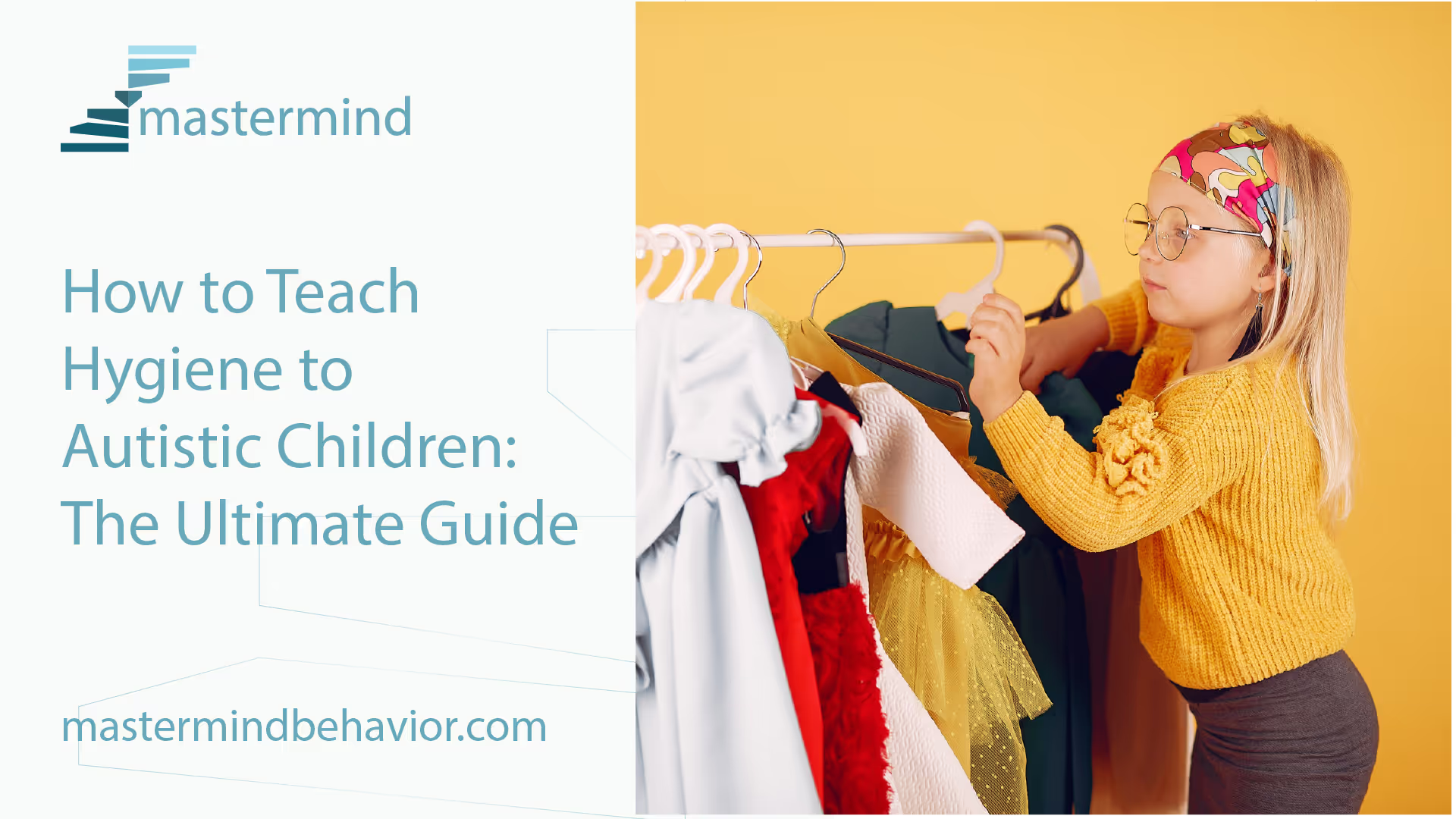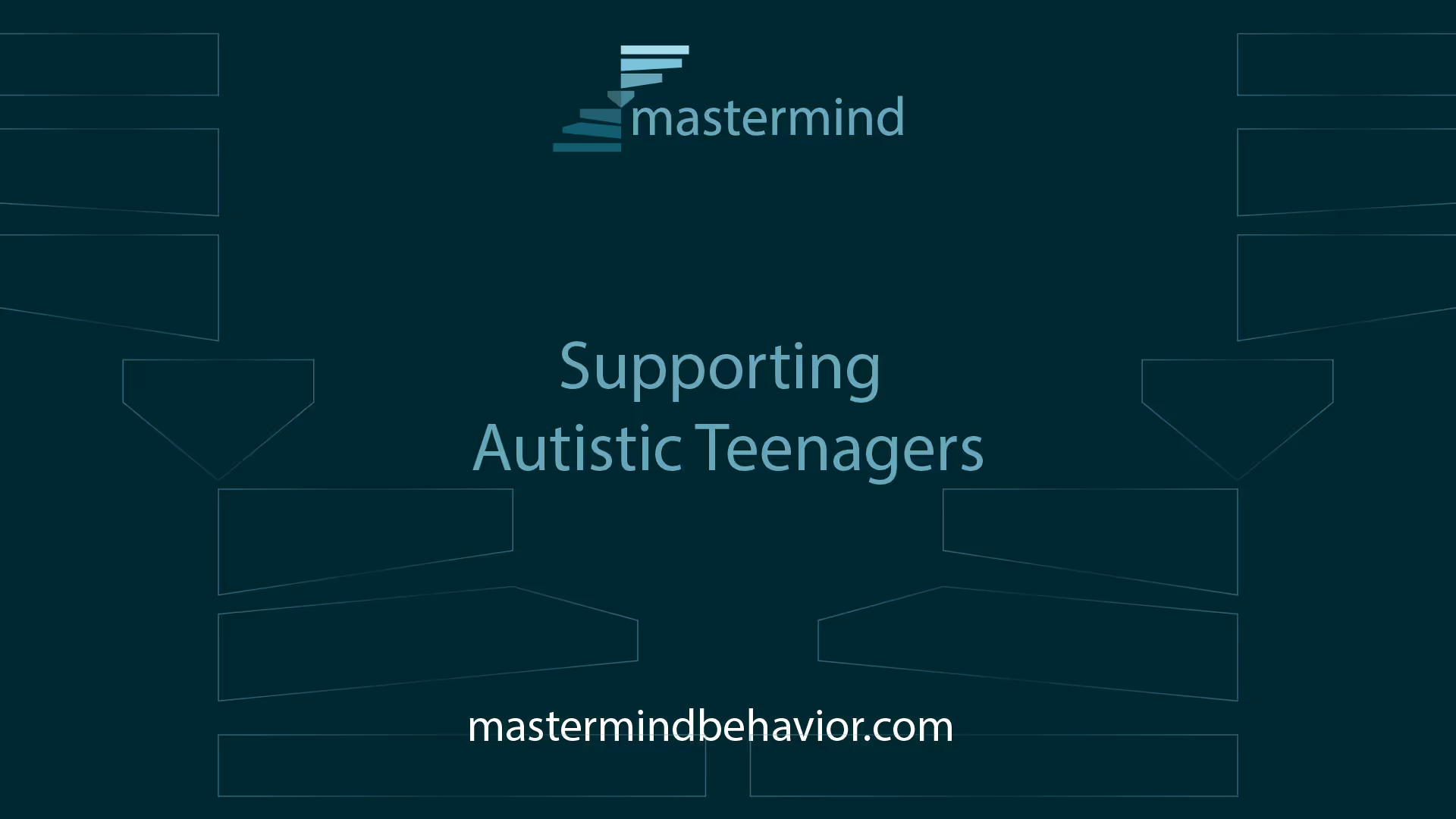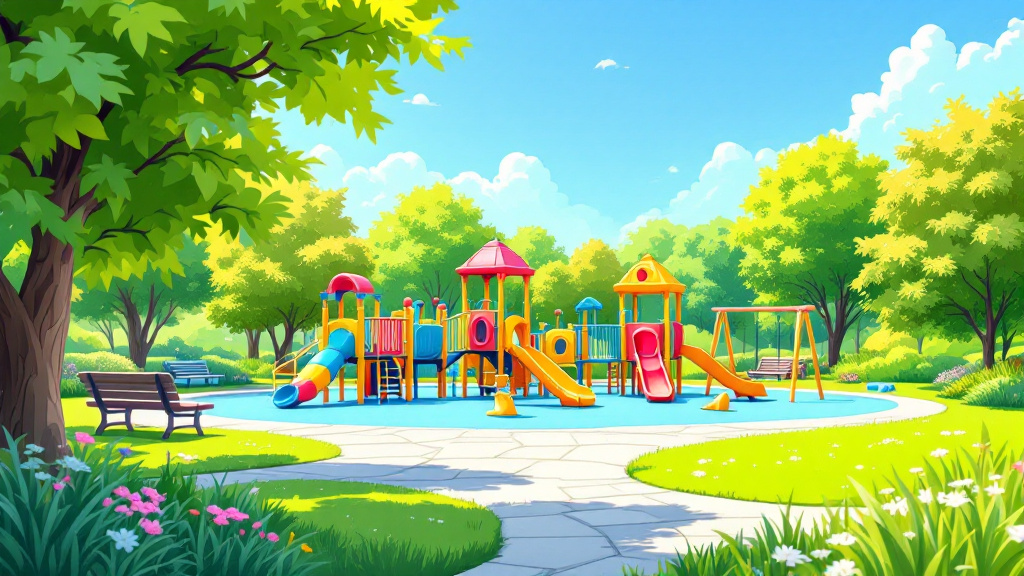How to Teach Hygiene to Autistic Children: The Ultimate Guide

Teaching Hygiene to Autistic Children

Understanding how to teach hygiene to autistic children can be a challenge for families and caregivers. However, with the right tools and strategies, it is possible to effectively instill these essential life skills. Two key techniques involve the use of visual schedules and visual timers.
Importance of Visual Schedules
Visual schedules provide structure and routine, which are beneficial for children with autism. These tools can be instrumental in planning daily routines and incorporating habits, such as clearing dishes from the dinner table or personal hygiene tasks like brushing teeth or washing hands.
Children with autism often respond better to visual cues, such as pictures, telling them what is expected, rather than verbal directions [2]. Therefore, tools like "first/then" boards or visual schedules can help children understand tasks and transitions better. Establishing a consistent daily schedule that includes cleaning and self-care activities is an effective method for teaching them about hygienic activities and habits. Splitting these tasks into morning and evening routines can make this strategy more successful [3].
Creating a visual schedule for bathroom and handwashing procedures is indispensable for students with autism, serving as a clear guide and aiding in developing essential life skills. Visual cues, such as pictures or diagrams, can help children with autism understand and remember the proper handwashing sequence. Social stories, personalized narratives describing the handwashing process, can also aid in teaching the steps effectively.
Utilizing Visual Timers
Alongside visual schedules, visual timers can be a highly effective tool when teaching hygiene to autistic children. These timers can help children understand the concept of time and numbers, which can be particularly useful for tasks like brushing teeth for the recommended two minutes.
Visual timers can be purchased online and are helpful for children who have trouble understanding time. In addition to helping children comprehend the duration of tasks, visual timers can also aid in transitioning between activities. For example, a visual countdown can prepare a child for the end of playtime and the beginning of their hygiene routine.
Visual schedules and timers are just some of the effective tools that can support families in New Jersey and beyond in teaching their autistic children about hygiene. For more information on the topic, check out our articles on children autism hygiene and handwashing showering kids with autism.
Effective Communication Strategies

When determining how to teach hygiene to autistic children, effective communication strategies play a crucial role. The use of visual aids in place of verbal directions and clear, concrete instructions can significantly improve a child's understanding and execution of hygiene routines.
Visual Aids Over Verbal Directions
Children with autism often respond better to visual cues rather than verbal instructions. Using tools such as "first/then" boards or visual schedules can help children understand tasks and transitions better, especially in the context of hygiene habits like handwashing [2].
For instance, visual cues—whether through photographs or symbols—serve as powerful tools to reinforce routines, fostering a positive and organized start to the day and a calm and orderly end. These visual aids can be used to demonstrate the sequence of actions required for activities such as brushing teeth or getting dressed (refer to our article on clothes for children with autism for more information).
Clear and Concrete Instructions
Providing clear, short, and concrete directions is essential when teaching hygiene to autistic children. For example, saying "brush your teeth" instead of vague instructions like "get ready for bed" can be more effective.
In the same vein, breaking down complex tasks (like handwashing) into manageable steps can significantly help children with autism overcome difficulties related to sequencing and motor skills. Clear visual cues, such as pictures or diagrams, can enhance understanding and memory of the proper sequence of actions.
Effective communication strategies are instrumental in teaching hygiene to autistic children. By implementing these strategies, families can ensure their children understand and follow essential hygiene routines, promoting a healthy and independent lifestyle. For more information on teaching hygiene to autistic children, visit our comprehensive guide on children autism hygiene.
Empowering Through Choices
Instilling a sense of control and independence in autistic children is fundamental for their development. One of the most effective ways to do this is by providing limited options and incorporating visual cues, especially when it comes to teaching hygiene.
Providing Limited Options
Autistic children may benefit from having choices, which helps them to feel a sense of control. However, too many options can be overwhelming and counterproductive. Limiting choices to two to four options can help children make decisions without feeling overwhelmed IBCCES. For instance, when teaching children about dressing appropriately, you could present them with two clothing options suitable for the weather and let them choose the one they prefer. This strategy can be used in various hygiene-related tasks, from selecting a toothbrush color to choosing between a bath or a shower.
Incorporating Visual Cues
Visual cues, whether through photographs or symbols, serve as powerful tools to reinforce routines, fostering a positive and organized start to the day and a calm and orderly end. These cues set a positive tone for the entire learning experience for autistic children and help them understand and remember hygiene practices, such as the proper handwashing sequence Full SPED Ahead.
For instance, a visual schedule using pictures or diagrams can be used to outline the steps for handwashing, from turning on the tap, applying soap, to rinsing and drying their hands My Team ABA.
Incorporating visual cues and providing limited options are strategies that can empower autistic children, fostering their independence and self-regulation. These strategies are part of a comprehensive approach on how to teach hygiene to autistic children, that also includes effective communication, engaging activities for learning, behavioral strategies, and support during puberty.
Engaging Activities for Learning
Engaging activities play a significant role in fostering learning, especially when it comes to teaching hygiene to autistic children. These activities should be designed in a way that they are hands-on, visual, and structured to facilitate effective learning.
Hands-On and Visual Activities
Hands-on and visual activities can be incredibly effective for teaching hygiene practices to children with autism. Activities that offer a structured and tangible approach, like playing computer games, sorting objects, completing puzzles, or tracing pictures can help keep children focused and calm [2].
Particularly for hygiene practices like handwashing, visual cues such as pictures or diagrams can help children understand and remember the proper sequence. Social stories, personalized narratives that describe the handwashing process, can also aid in teaching the steps effectively [5]. To make handwashing an engaging activity, consider incorporating games, songs, or interactive activities. Turning it into an enjoyable experience can lead to better engagement and cooperation from the child. For more information on teaching hygiene practices, refer to our guide on handwashing and showering for kids with autism.
Structured Learning Approaches
Structured learning approaches, such as visual schedules and work sequence visuals, can provide clear guidance and foster independence in children with autism. These tools reduce the need for constant verbal cues and promote independence in task completion.
Moreover, autistic children may face executive functioning challenges, including difficulties with time management, planning, organization, working memory, and task completion. Tools like prompting, visual task education, tangible reminders, and video modeling can facilitate understanding and application of tasks. By integrating self-care habits into schedules and routines, task performance can become more automatic for children [6].
Overall, using engaging, hands-on, and visual activities, along with structured learning approaches, can significantly enhance the process of teaching hygiene to autistic children. Remember, every child is unique and may respond differently to various strategies. Therefore, it's important to try different methods and see what works best for your child. Check out our detailed guide on children autism hygiene for more tips and strategies.
Behavioral Strategies for Hygiene
When it comes to figuring out how to teach hygiene to autistic children, implementing behavioral strategies can be quite beneficial. Two effective approaches are Positive Behavior Support (PBS) and Applied Behavior Analysis (ABA).
Positive Behavior Support (PBS)
Positive Behavior Support (PBS) is a strategy aimed at improving an individual's quality of life and reducing behaviors of concern. PBS incorporates different theoretical frameworks and strategies, all focusing on teaching new skills and making changes in the individual's environment [7].
In the context of hygiene, PBS can be used to create a supportive environment that encourages children to partake in hygiene activities. This may involve adjusting the child's surroundings to make hygiene tasks more appealing or manageable. For example, for a child who is sensitive to certain textures, you might choose clothes for children with autism that are soft and easy to put on and take off.
Applied Behavior Analysis (ABA)
Applied Behavior Analysis (ABA) is an instructional approach used to teach skills in a structured environment. This method breaks down skills into smaller components and reinforces desired behaviors through positive praise and tangible rewards.
According to Hidden Talents ABA, ABA therapy is a proven and effective approach for managing ASD symptoms. A team of licensed and highly-trained experts can work with autistic children to provide a custom treatment plan based on their specific sensitivities, sensory issues, and needs to help them attain personal hygiene goals.
Under ABA, a child might be given positive reinforcement each time they successfully complete a hygiene task like handwashing or showering. This could be in the form of verbal praise, a sticker, or a small treat.
However, it's important to note that autistic youth may lack social motivation for hygiene tasks, requiring alternative sources of motivation like positive reinforcement, reward systems, and concrete encouragement. These motivators can be gradually phased out as habits develop. It's important for autistic children to understand the need for hygiene activities even if they don't agree with them, and to complete the activities regardless.
In conclusion, understanding behavioral strategies and how to effectively implement them can go a long way in teaching hygiene to autistic children. Whether you choose PBS, ABA or a combination of both, remember that patience, consistency, and positivity are key in helping children learn and maintain good hygiene habits.
Supporting Autistic Teenagers

As autistic children transition into adolescence, they are likely to face new challenges related to physical changes, emotional regulation, and social interactions. This phase of life, coupled with the unique aspects of autism, requires special attention.
Puberty and Emotional Regulation
Puberty is a time of significant hormonal fluctuations that can lead to pronounced mood swings and intense emotions. For autistic teenagers, this period can be particularly challenging as they may have difficulties in regulating emotions [8].
In addition, the physical changes that come with puberty, such as the growth of body hair or voice changes, can be potentially overwhelming for autistic teenagers due to heightened sensory sensitivities. This may increase their anxiety levels and necessitate tailored approaches to manage new sensations, including changes in clothing options and personal hygiene routines.
One of the key areas to focus on during this time is hygiene education. Autistic teenagers may face difficulties in establishing new hygiene routines, especially concerning essential practices like handwashing, showering, menstrual management, and bathroom independence. By providing clear instructions and utilizing visual aids, families can support their teenagers in learning and adopting these important hygiene practices.
Navigating Social Challenges
Autism can make understanding and adapting to social nuances challenging. During puberty, these challenges may intensify as teenagers try to navigate changing dynamics in friendships and the onset of romantic interests [8].
For example, autistic teenagers may require guidance in differentiating between private and public behaviors, especially concerning their developing sexuality. They may also find it challenging to navigate the complex emotional and social journey of puberty, particularly in high school where social situations become more intricate. Providing appropriate support can help them adapt to these transitions and develop necessary social skills for successful interactions.
In conclusion, supporting autistic teenagers through puberty involves a comprehensive approach that addresses their physical, emotional, and social needs. By focusing on areas such as emotional regulation, social skills, and hygiene education, families can help their teenagers navigate this significant life stage with confidence. For more information on this topic, please visit our section on autism and puberty.
References
[2]: https://ibcces.org/blog/2016/07/15/behavior-strategies/
[3]: https://hiddentalentsaba.com/teaching-autistic-children-proper-hygiene/
[4]: https://www.fullspedahead.com/visual-schedules-for-autism/
[5]: https://www.myteamaba.com/resources/handwashing-techniques-kids-with-autism
[6]: https://blog.stageslearning.com/blog/hygiene-vs.-autism-common-challenges-and-possible-adaptations
[7]: https://thespectrum.org.au/autism-strategy/autism-strategy-behaviour/
[8]: https://learningforapurpose.com/category/personal-hygiene-skills/
Recent articles

How to Support Peer Relationships for Children with Autism
Building Bridges: Fostering Peer Connections in Children with Autism

The Benefits of Community-Based ABA Therapy for Social Skills Development
Fostering Social Integration and Independence in Children with Autism

How ABA Therapy Helps Build Daily Living Skills in Children
Empowering Independence: The Transformative Role of ABA in Children's Daily Skills

The Role of Collaborative Goal Setting in ABA Therapy Programs
Enhancing Outcomes Through Teamwork in ABA Therapy

How In-Home ABA Therapy Encourages a Natural Learning Environment
Creating Comfort and Confidence in Home-Based Autism Support

Understanding the Impact of Co-Occurring Conditions on Autism Treatment
Navigating Complexities: How Co-Occurring Conditions Shape Autism Interventions


